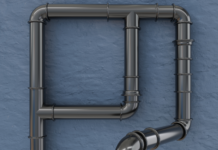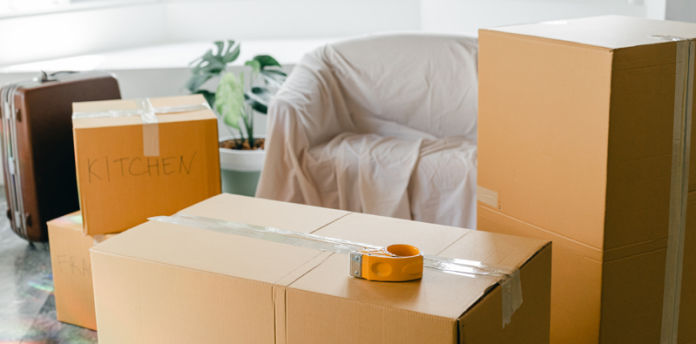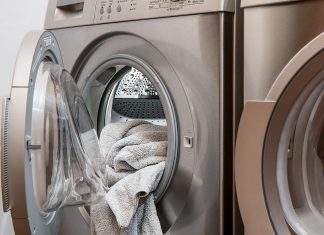Moving is a challenging task that often comes with stress and anxiety. However, with the right packing tips, you can turn this daunting process into a more manageable and efficient endeavour. In this guide, we’ll explore a variety of creative and practical packing tricks to make your move stress-free and more organised.
Packing Materials for Your House Move
To stay organised, make a packing checklist before packing. As you prepare for your big move, these items can quickly become packing essentials:
- Boxes – You will need strong, sturdy boxes suitable for heavy items.
- Packing tape – It is your most valuable helper, so make sure you get plenty of it.
- Roll of stretch wrap – Protect your furniture from scratches during your move.
- Fillings – The boxes will have air gaps that will increase the risk of damage. You can fill the gaps with bubble wrap, old newspapers, packing paper, etc.
- Marker or labels – Labelling will help you to organise your moving boxes easily.
- List – Make a list of all the boxes after they have been packed, closed, and labelled to make sure none of them gets lost.
How to Pack For a Seamless Relocation
In order to make your house move as smooth as possible, you will need to use some simple packing hacks. According to moving experts, you should:
Maximise Space With Strategic Packing
One of the biggest challenges during a move is making the most of the available space. Instead of randomly tossing items into boxes, employ strategic packing techniques to optimise every inch. Use the space inside shoes by stuffing them with smaller items, and fill gaps in boxes with clothing or linens. These hacks not only save space but also reduce the number of boxes you need, making the unpacking process smoother.
Protect Fragile Items Like a Pro
Packing fragile items requires extra care to ensure they arrive at your new home intact. Instead of investing in expensive packing materials, get creative with everyday household items. Use socks as extra padding for glassware, and wrap delicate items in clothing for added protection. Creating cushioning within boxes using towels or blankets adds an extra layer of security, minimising the risk of breakage.
Space-Saving Techniques For Clothing and Linens
Clothing and linens can quickly take up a significant portion of your moving boxes. To maximise space, consider employing space-saving tips such as the military roll method. This technique saves space and prevents your clothing from wrinkles. Additionally, vacuum-sealed bags can compress bulky items like bedding, allowing you to fit more into each box.
Efficient Packing for Electronics and Cables
Electronics and cables can be a nightmare to unpack if not packed with care. Keep cables organised by using twist ties or cable organisers. Take a snapshot of your cable setup before disconnecting everything to make reassembly a breeze. For fragile electronics, save original packaging or use blankets and towels as makeshift cushions during transport.
Use Multi-Functional Packing Materials
Get creative with your packing materials by using everyday items in multiple ways. Instead of buying expensive glass protectors, use socks to wrap stemware and delicate glass items. Plastic wrap can serve as an excellent spill-proofing barrier for toiletries. By finding alternative uses for common items, you will save money and will reduce waste.
Create an Essentials Box for Seamless Unpacking
Packing an essentials box is a game-changer for a smooth transition. This box should contain items you’ll need immediately upon arrival, such as toiletries, a change of clothes, and important documents. Label this box clearly and prioritise it during the unpacking process. Having access to essentials without rummaging through multiple boxes will make your first day in the new home more comfortable.
Quick and Easy Labeling Techniques
Efficient labelling is the key to an organised move. Instead of scribbling vague descriptions on boxes, employ quick and easy labelling hacks. Consider colour-coding boxes for different rooms or using a numbering system. Creating a detailed inventory of each box’s contents not only helps during unpacking but also serves as a reference in case of misplaced items.
Manage Time With a Packing Timeline
Time management is crucial during a move to avoid last-minute chaos. Develop a packing timeline that breaks down tasks over several weeks. Set reminders on your phone or a calendar to stay on schedule. By tackling packing in smaller, manageable increments, you’ll reduce stress and ensure that no task is overlooked.
Extra Packing Hacks for Moving House
Here are a few more packing tips for those items that require extra attention.
Aquarium
You will need a cardboard box that is suitable for the size of the aquarium. Cover the bottom and walls of the box with soft fabric and place the aquarium. Tape the box and label it “FRAGILE”.
Piano
If you want to avoid accidental scratches on your piano, wrap it in stretch wrap as best as you can. You can also use blankets secured with packing tape. It’s a heavy item, so you’ll need at least three strong helpers. Yet, if you don’t feel confident about how to pack and move such a valuable belonging, you should use a removal company to do it for you.
Sculptures
Cover every part of your sculpture twice with bubble wrap. Secure it with packing tape and put it on cardboard. Bend as much as possible to cover the whole sculpture. Use packing tape to wrap it tightly. Label the box “FRAGILE”.
Mirrors
If the mirror has no frame, professional packers advise purchasing rubber or cardboard corner protectors. For covering your mirror, use a telescoping picture box, which expands to fit any mirror size or framed artwork. You can also cut two pieces of cardboard and fix them to the front and back of the mirror. For extra protection, wrap the mirror with a towel or bubble wrap.
Large Houseplants
Before moving day, you should prune your indoor plants and remove any dried foliage. In this way, you will reduce the space required in the van when you load up your plants. Re-pot your large plants in plastic pots and pack them individually in order to prevent damage during a move.
Conclusion
Don’t let the moving process stress you out. With some packing hacks, you can handle the task more efficiently, saving time and energy. Share these tricks with friends and family embarking on their moving journey, creating a community of savvy movers. By implementing these creative and practical packing hacks, you can turn your move into a positive and organised experience.











































